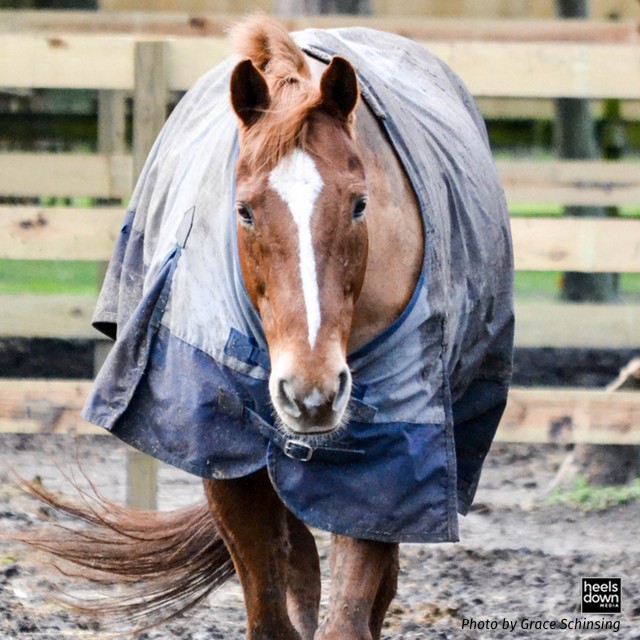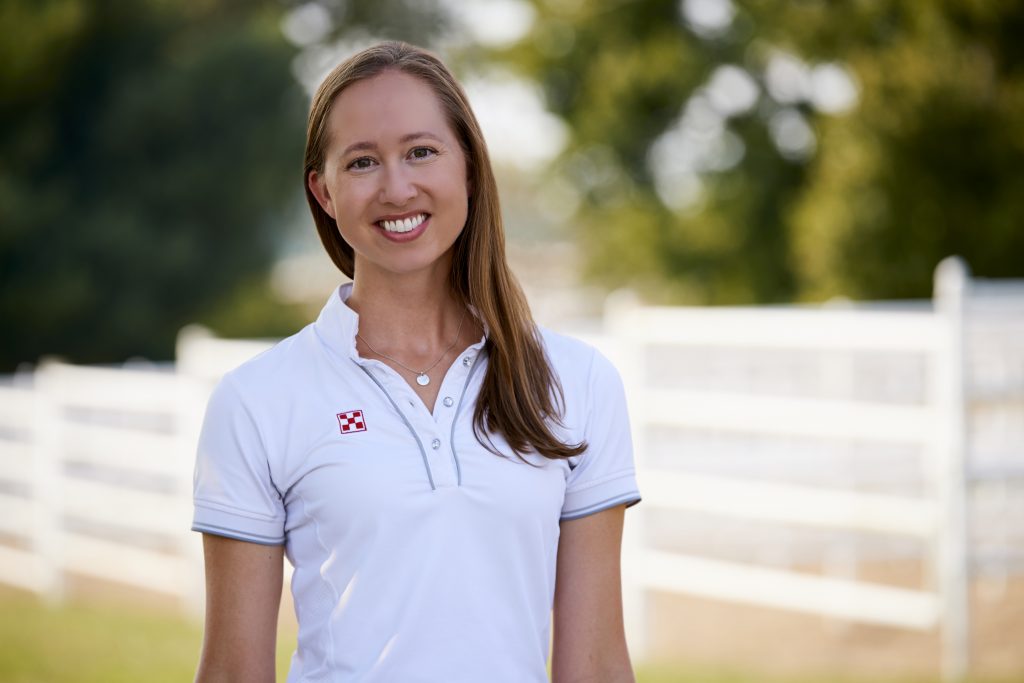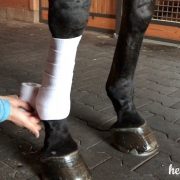Now Is The Time To Be Preparing Your Horse For Winter

Fall is here. With the ushering in of cooler weather and thickening coats, it also means the pasture and forage your horse is eating will adjust with the changing seasons.
Horse owners with both easy and hard keepers can prepare for the changes autumn brings in a few easy ways. Heels Down spoke with Dr. Anna Dunaway, an equine nutritionist with the Purina Animal Health team to learn more.

What are the main causes of weight loss in horses?
There are two categories we most commonly see with weight loss. The first and the most obvious is just not feeding enough calories. Maybe a horse is working harder in its job than it was previously, so with that energy increase, there are more calories going out with that energy increase than going in. Sometimes horses may be growing faster, and just require more in their diet to accommodate that spurt. At this time of year, when the weather is colder and horses’ metabolic rates speed up to keep them warm, they are burning more calories.
The other category is due to a change in the digestibility of the diet or how well a horse is able to utilize the calories in the feed or forage. We see this sometimes when the hay changes in quality- maybe you get a load of hay in that is more mature. Horses will have to eat more of that hay to get the same amount of calories compared to an easier-to-digest, less mature hay. Availability of fiber calories is especially important in senior horses. As horses age, some will struggle to pull the nutrients they need from forage, whether due to their dental condition or hindgut function. They need to be offered a senior feed which can replace those calories that are no longer digestible from hay.
What about weight gain?
Now we’re talking about the opposite problem – too many calories going in and not enough coming out. This can happen in a number of ways, maybe the quality of the hay has improved in a horse’s diet, or maybe the horse is spending more time on pasture. For an easy keeping horse, there are a lot of ways those calories can sneak in over time. I think the average horse owner often overestimates just how hard their horses are working – those in light or moderate work just don’t need as much fuel as those in hard work. It’s actually quite difficult to keep a horse in truly hard work – so in many cases these easy keeper types may be getting more calories than they really need.
This is where a good ration balancer is beneficial – easy keepers can get their calorie needs met with forage alone, but still require good quality protein and their daily requirement of vitamins and minerals. A ration balancer will ensure the horse is getting the nutrients it needs without the calories it doesn’t.
There are hard keepers and then there are easy keepers. As we edge closer to the winter season, what should horse owners be thinking about in each one of these camps?
Planning ahead and taking stock of what kind of condition your horse is in now – ahead of the weather changes – will help you in the long run.
Now is the time to be asking the questions of what you can be doing to keep them in the best shape possible through winter. Ideally you’d like for them to have a little cushion going into winter if you know they are the type to drop weight. It’s harder to gain weight in the thick of the season. In a lot of cases, that means increasing their calorie intake now so that you’re not struggling with a thin horse by spring. A fall weight-gain program could be anything from adding more hay, switching to a better quality hay, increasing feed amounts, switching to a higher calorie feed, or all of the above.
For the easy keepers, you’d be surprised how these guys can sneak through winter with their blankets on, and come out of the season looking a bit overweight. Especially for those who live in a free-choice hay situation. You want to keep their guts happy and feed them quality forage, but if they’re not working hard in the winter, you can consider limiting their hay intake within reason. This is where a slow feeder haynet or muzzle may come in handy.
We often hear from equine health professionals that a good way to assess a healthy horse is by using the Henneke Body Condition Scoring System. Can you explain how that works?
The condition scoring system was developed by Texas A&M University – it’s the standardized system that rates a horse based on its condition on a 1-9 scale. A horse who scores a 1 is an absolutely emaciated horse. These are the starvation cases that tend to be in deep trouble. A 9 is a fatter horse than most people will ever see in person. A 5 is generally considered average or ideal. If you walk up to a horse who scored a 5, you can’t see their ribs right away, but you can feel them easily. If you can see their ribs, that is a score below a 5. It depends on the work you are doing with your horse, but I would say a really fit racehorse or eventer type would be OK down to a 4.5. Many bloomy show hunters or round ponies are close to a 7, 7-plus. But that is not healthy long-term and we don’t really want to see a show horse at more than a 6 or 6.5.
Once you get outside of that middle range, the stress of the cold in winter can get to the skinny ones a lot harder. In the heavier ones, that’s where you’ll see unnecessary wear and tear on the feet and legs, and it puts them at a higher risk of metabolic diseases in the future. It’s a good idea to assess body condition ahead of winter. If your horse is a 5 now and is living out and you know they tend to drop weight easily, now is the time to bump calories slightly. I don’t mind seeing those types start the winter at a 6.
When is the appropriate time to make changes in a horse’s diet?
Keep in mind that changes in body condition can take a while in horses. They’re really inefficient in weight gain, actually. It takes a lot of calories to put on a pound for a horse. You don’t want to put a horse on a crash diet either, to lose weight, because you also don’t want them to lose muscle.
Generally speaking, you’ll want to see a horse heading in the right direction weight-wise within 60 days of making a change to their diet or routine. It may take longer than that to be where you want to be. The best advice I can give is to plan ahead. With diet changes, most horse owners already know that those changes should be made gradually. Most people, however, don’t realize that also comes to play with hay, not just feed. Changes in hay is the biggest risk factor for colic. Consult with your vet if you have more questions.


